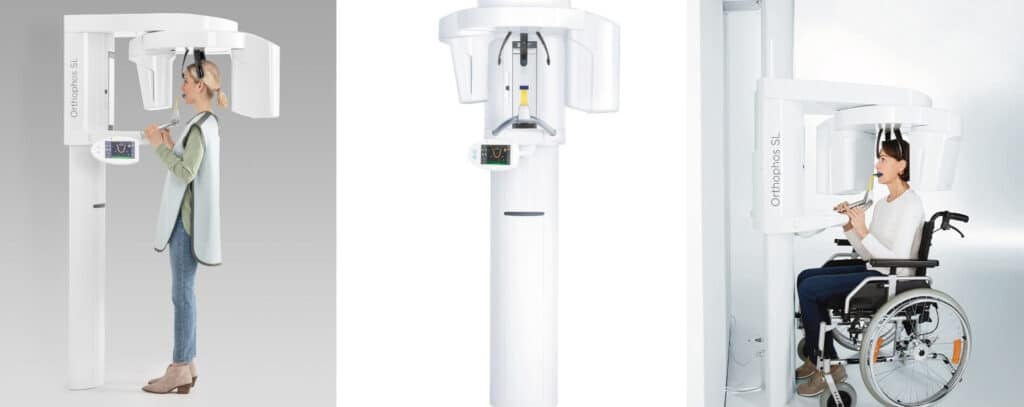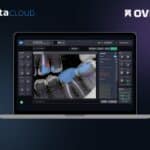Dentsply Sirona expands its digital offering with DS Core Diagnose, a platform combining AI tools and cloud storage for orthodontic diagnostics.
With Dentsply Sirona’s recent launch of DS Core Diagnose, orthodontists now have access to AI-powered diagnostic tools integrated into the company’s cloud-based platform, DS Core. The system centralizes patient data—such as CBCT scans, panoramic images, intraoral scans, and clinical documents—into a single, secure environment accessible from any device. DS Core Diagnose builds on this foundation, offering features like AI-generated anatomical visualizations and panoramic curve proposals to support diagnosis and patient communication.
To learn more about how this technology fits into the orthodontic workflow, Orthodontic Products spoke with Jill Uhryniak, group vice president orthodontics and aligner solutions at Dentsply Sirona, and Max Milz, group vice president, connected technology solutions. In this interview, they discuss how DS Core integrates with imaging systems like Orthophos and Axeos, how AI is being applied in clinical contexts, and what orthodontic practices can expect from DS Core as the platform continues to evolve.

Dentsply Sirona’s Orthophos
Orthodontic Products: Can you provide an overview of Dentsply Sirona’s current imaging systems—like Orthophos and Axeos—and explain how they connect with and enhance the DS Core platform?
Max Milz: Orthophos and Axeos are two of the most trusted systems in our extraoral X-ray portfolio, and they’ve been very well received by orthodontic practices worldwide. Both are designed to capture high-resolution 3D CBCT, panoramic, and cephalometric images, while keeping radiation exposure as low as reasonably achievable for both adults and children. Orthophos provides volumes up to 11 by 10 centimeters, which fits most orthodontic and dentoalveolar cases. Axeos takes it a step further with volumes up to 17 by 13 centimeters, which is ideal when you want to visualize condyles, the airway, or larger areas of anatomy for more comprehensive treatment planning.
Now, when it comes to DS Core, it’s really the platform that supercharges what these devices can do. DS Core connects all the imaging directly to a cloud environment and stores them securely, so every scan is instantly available from anywhere for diagnostics, patient communication, and collaboration. Rather than the imaging systems enhancing DS Core, it’s DS Core that supercharges the imaging experience and makes it easier to get the most out of the data you capture.

Dentsply Sirona’s Axeos
OP: For orthodontists already using Dentsply Sirona imaging systems, what does the DS Core platform offer that wasn’t available through previous software solutions?
Jill Uhryniak: For orthodontists who are already using Dentsply Sirona imaging, DS Core offers something very different from traditional software. It’s a single, cloud-based space where every piece of patient media lives together: CBCT and panoramic scans, ceph images, intraoral scans, photos, and documents. That means no more jumping between programs or searching through folders. Sharing images with a referring doctor or a colleague is just a matter of a few clicks, without the hassle of USB drives or large email attachments.
It also makes communicating with patients more effective. Being able to share 3D images and treatment proposals for patients to look at from home is a great way to build trust and increase case acceptance. And because DS Core integrates services like SureSmile Aligner or third-party labs, it brings everything under one roof.
OP: How does the new DS Core Diagnose feature change the way orthodontists can access and use CBCT and panoramic imaging data in daily practice?
Uhryniak: DS Core Diagnose takes this a step further by transforming how orthodontists can access and use imaging data every day. It lets you review and diagnose 2D and 3D images from any internet-connected screen, whether you’re in the practice, at home, or on the go. That flexibility alone makes a big difference for busy practitioners or those with multiple locations.
What really stands out is how it helps with patient communication. The system leverages AI capabilities to automatically create visualizations of teeth, bone, and nerve canals, so patients can see their diagnosis. You can combine these images with intraoral scans and add annotations, creating a single digital canvas that makes treatment plans easier to explain and easier for patients to understand. A good example could be an impacted canine: with DS Core Diagnose, you can show a patient and family members precisely where the tooth is positioned and how it relates to surrounding structures, helping them clearly see and understand the situation and the need for treatment.
OP: What specific AI capabilities in DS Core Diagnose are most relevant for orthodontic diagnosis and treatment planning?
Milz: We like to describe our approach as “assisted intelligence,” because the AI is there to support clinical decisions, not replace them—and the ultimate intelligence is always the clinician, the AI is only the assistant. Right now, we’re using AI to generate aligner treatment outcome simulations based on intraoral scans, and many of our customers tell us this has become an important part of patient education and case acceptance. Seeing a realistic preview of how their smile could change helps patients feel confident about starting treatment.
Through our SureSmile technology, we were the first to bring CBCT data together with root morphology and surrounding bone anatomy into digital orthodontic treatment planning. This allows orthodontists to see not just how crowns move, but how the entire tooth and its root interact with the supporting bone throughout treatment. That level of insight is a significant clinical advantage, helping to protect root integrity, support periodontal health, and give greater confidence when planning complex movements. We believe that including CBCT data as part of routine digital orthodontic planning should become the standard of care, because it leads to safer, more predictable tooth movement and a more efficient planning process than crown-only approaches.
OP: Can you walk us through how a typical orthodontic practice might integrate DS Core into their existing workflow?
Milz: Bringing DS Core into orthodontic practice is straightforward. One of the biggest benefits is how easily it supports collaboration with your referral network. Instead of mailing DVDs, USB sticks, or relying on email attachments, you can share scans and images with a single click through an encrypted link. DS Core is also designed to work with equipment from different manufacturers, including Planmeca, Morita, and Carestream, so it’s convenient even for practitioners who are planning to upgrade to Dentsply Sirona X-rays. Just as importantly, DS Core connects to third-party dental labs, allowing you to effectively send CBCT data, intraoral scans, and case files directly to lab partners, helping make appliance fabrication more convenient. Getting started is as simple as creating an online email account. You just set up your DS Core account, and your team can begin uploading, sharing, and collaborating almost immediately. There’s no complicated installation or IT overhaul. If you’re using SureSmile, you’ll also appreciate how DS Core streamlines the process of submitting aligner cases and running AI-driven outcome simulations. Altogether, it helps make day-to-day operations more efficient, strengthens collaboration with both your referral network and lab partners, and delivers a smoother, more engaging experience for patients.
OP: What kinds of device access or interoperability does DS Core support for practices with mixed technology environments?
Milz: We know many practices have a mix of equipment, and DS Core was built with that in mind. Whether you’re scanning with Primescan, 3Shape, or taking X-ray images with Dentsply Sirona, Planmeca, Morita, or Carestream devices, all of your data can be stored and accessed in DS Core. This means you could start most of your digital workflows in one place while helping you stay compliant with your local data privacy and patient data protection standards and regulations. Through partnerships in the 2D AI X-ray space with leading players such as Pearl and Videa, which directly integrate with DS Core, we are already covering further areas.
OP: How is Dentsply Sirona planning to further expand DS Core’s capabilities, particularly for orthodontic applications, in the next 12 to 18 months?
Uhryniak: At Dentsply Sirona, connected dentistry is our goal. This includes integrating more orthodontic applications into our DS Core ecosystem. We look forward to the continued partnership with our customers to develop products and services that deliver exceptional orthodontic outcomes for their patients.
Milz: Beyond orthodontics, we will continue to integrate all types of clinical workflows into DS Core so it really becomes the “clinical operating system” of a dental practice. This also means cloud-driven equipment like the Primescan 2, which serves as an archetype for other future devices, clinical applications from diagnosis to treatment planning and manufacturing, and of course technical services. As we have demonstrated since the launch of the basic version of DS Core in May 2022, we keep adding new functionalities at least every quarter—and these are immediately available to all subscribers. We will continue on this path, and there are some exciting features planned for 2026 and beyond. DS Core is also designed for third-party integrations, in fact there is a standardized interface, or API, that third parties can access through our website open.dscore.com. That’s what connected dentistry is really about: overcoming silos and, quite literally, connections. OP
Photos: Dentsply Sirona










